Everything you need to know about cornflakes making machine In 2024
Introduction
In the bustling landscape of the food processing industry, the role of cornflakes making machines stands out as a cornerstone in the production of one of the world's most beloved breakfast cereals. As we delve into the intricacies of cornflakes manufacturing in 2024, understanding the fundamentals of these machines becomes paramount. This introduction sets the stage for exploring the various aspects of cornflakes making machines, from their historical significance to their modern-day innovations.
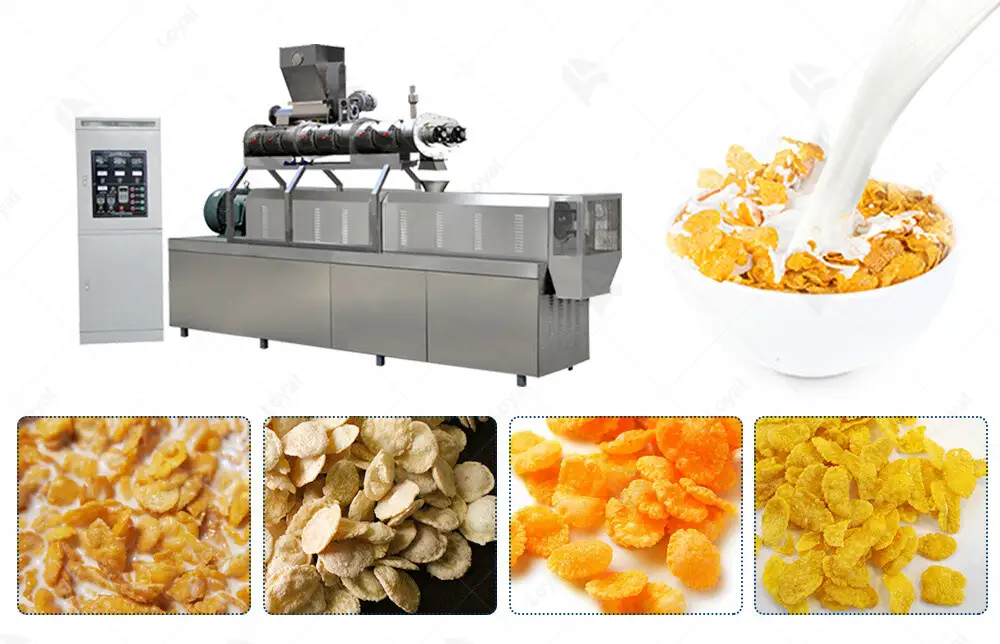
Advantages of corn flakes making machine
Cornflakes making machines offer numerous advantages in the food processing industry. Below is a comprehensive comparison of the benefits of using cornflakes making machines:
Advantages | Description |
Efficiency | Cornflakes making machines are highly efficient, capable of processing large quantities of corn into flakes within a short period. This allows for increased production output, meeting high demand and optimizing manufacturing processes. |
Consistency | These machines ensure consistency in the size, shape, and texture of cornflakes, resulting in uniform product quality. Consistent flakes are essential for maintaining brand reputation and meeting consumer expectations for taste and appearance. |
Automation | Cornflakes making machines are equipped with advanced automation features, reducing the need for manual intervention and minimizing the risk of human error. Automated processes enhance efficiency, reduce labor costs, and improve overall productivity. |
Customization | Modern cornflakes making machines offer flexibility in production, allowing manufacturers to customize flakes according to specific requirements. Whether it's adjusting thickness, flavoring, or adding ingredients, these machines can accommodate various preferences. |
Hygiene and Safety | With stainless steel construction and sanitary design, cornflakes making machines prioritize hygiene and safety standards. Easy-to-clean surfaces and adherence to food safety regulations ensure the production of safe and sanitary cornflake products. |
Cost-effectiveness | Investing in a cornflakes making machine can lead to long-term cost savings. By streamlining production processes, reducing waste, and improving efficiency, manufacturers can lower operational costs and achieve a favorable return on investment over time. |
Versatility | Cornflakes making machines are versatile and can be used for processing various grains besides corn, such as rice, wheat, or oats. This versatility enables manufacturers to diversify their product offerings and adapt to changing consumer preferences and market demands. |
Quality Control | These machines facilitate precise control over processing parameters, ensuring that each batch of cornflakes meets quality standards. Tight quality control measures contribute to consistent product quality and help build consumer trust and loyalty. |
In conclusion, cornflakes making machines offer a multitude of advantages, ranging from increased efficiency and consistency to versatility and cost-effectiveness. Investing in these machines can revolutionize the production of cornflakes, allowing manufacturers to meet consumer demand while maintaining high standards of quality and safety.

Types of Cornflakes Making Machine
Cornflakes making machines come in various types, each designed to fulfill specific functions in the cornflakes manufacturing process. Understanding the different types of machines is essential for optimizing production efficiency and ensuring product quality. In this section, we'll explore the main types of cornflakes making machines and their functionalities.
1. Extrusion Machines:
- Extrusion machines play a crucial role in the cornflakes manufacturing process by converting raw materials into the desired shapes and textures.
- These machines use a combination of heat, pressure, and mechanical force to process cornmeal or maize into a dough-like consistency.
- The dough is then extruded through a die to form the characteristic flake shape before being cut into individual flakes.
2. Drying Machines:
- Drying machines are essential for removing moisture from the extruded cornflake dough, ensuring crispiness and extended shelf life.
- These machines typically use hot air or infrared radiation to evaporate moisture from the surface of the flakes, leaving them with the desired texture and flavor.
- Proper drying is crucial to prevent the formation of mold and bacteria and maintain product quality.
3. Toasting Machines:
- Toasting machines are responsible for giving cornflakes their distinctive golden brown color and toasted flavor.
- These machines use controlled heat to evenly toast the cornflakes, enhancing their taste and aroma.
- The toasting process also helps improve the texture of the flakes, making them crispier and more enjoyable to eat.
4. Coating and Flavoring Machines:
- Coating and flavoring machines add an extra layer of flavor and texture to the cornflakes, enhancing their appeal to consumers.
- These machines can apply coatings such as sugar, honey, or chocolate to the surface of the flakes, as well as add additional ingredients like nuts or dried fruit.
- The coating and flavoring process is carefully controlled to ensure even distribution and consistency across all the flakes.
5. Packaging Machines:
- Packaging machines are the final step in the cornflakes manufacturing process, responsible for sealing the finished product in airtight containers or bags.
- These machines come in various types, including vertical form-fill-seal machines, horizontal flow wrappers, and automatic pouch packing machines.
- Packaging machines ensure product freshness, extend shelf life, and provide convenience for consumers.
In conclusion, understanding the different types of cornflakes making machines is essential for optimizing production processes and ensuring the high quality of the final product. By selecting the right combination of machines and technologies, manufacturers can produce delicious and nutritious cornflakes that meet consumer expectations in 2024 and beyond.
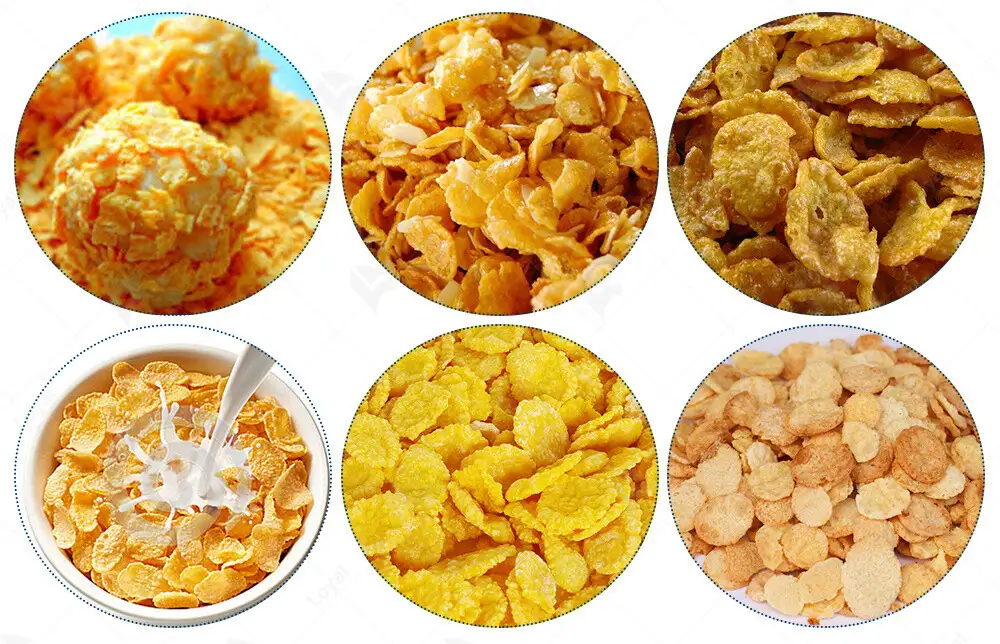
Work Flow of Corn Snacks
1. Raw Material Preparation:
- The work flow of corn snacks begins with the careful selection and processing of high-quality corn flour. This finely ground cornmeal serves as the primary ingredient for creating the base mixture used in snack production.
- Manufacturers prioritize the sourcing of premium corn flour to ensure consistent taste and texture in the final product. Rigorous quality control measures are implemented to assess factors such as moisture content, particle size, and purity.
2. Mixing and Flavoring:
- Once the corn flour is prepared, it is mixed with water and other ingredients to form a dough-like consistency. This mixture serves as the foundation for the creation of various corn snack shapes and textures.
- The versatility of corn snack machines allows for the incorporation of a wide range of flavors and seasonings. From classic salted varieties to more adventurous options like cheese, barbecue, or chili, manufacturers can customize the flavor profile to cater to diverse consumer preferences.
3. Extrusion and Shaping:
- The prepared dough is then fed into the extrusion chamber of the corn snack machine, where it undergoes high pressure and temperature to transform into its desired form.
- Specialized dies and molds are used to shape the extruded dough into familiar corn snack shapes, such as curls, twists, or rings. Precision engineering ensures consistent sizing and texture throughout the production process.
4. Frying or Baking:
- After shaping, the corn snacks enter the cooking stage, where they are either fried in oil or baked in an oven. This step is crucial for achieving the signature crunchiness and golden brown color associated with corn snacks.
- Manufacturers carefully control cooking time and temperature to ensure uniformity and avoid overcooking or burning. Advanced corn snack machines feature precise temperature control and monitoring systems for optimal results.
5. Seasoning and Packaging:
- Once cooked to perfection, the corn snacks undergo a final seasoning process to enhance their flavor profile. This may involve spraying or tumbling the snacks with additional seasoning blends to achieve the desired taste intensity.
- Finally, the seasoned corn snacks are carefully packaged into individual servings or bulk containers, ready to be distributed to eager consumers. Packaging materials are chosen to preserve freshness and extend shelf life while maintaining product integrity.
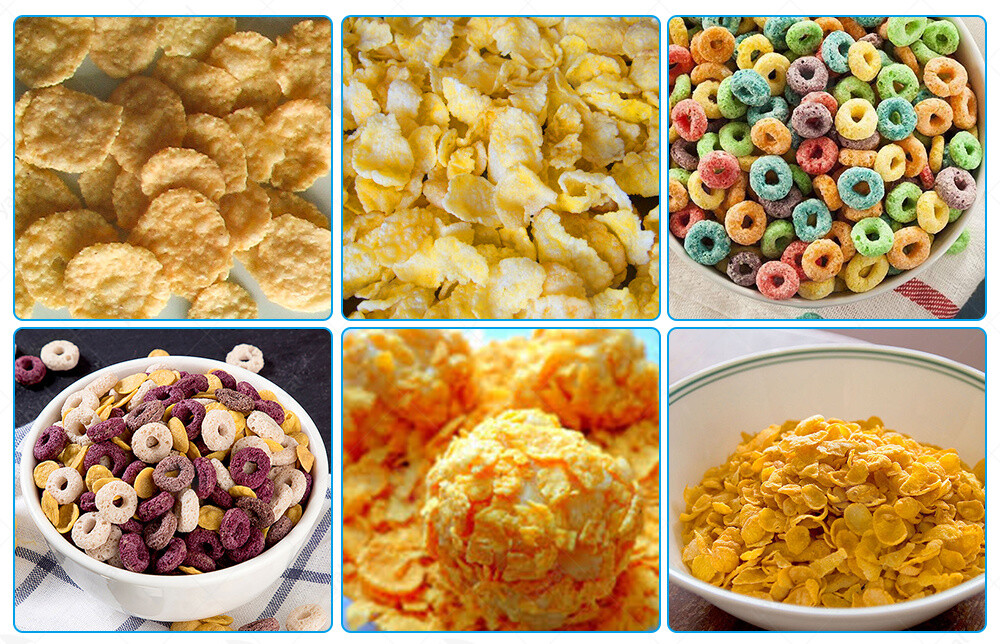
Maintenance and Troubleshooting
Maintaining and troubleshooting a cornflakes making machine is crucial to ensure smooth operation and consistent product quality. In this section, we'll delve into the best practices for maintenance and troubleshooting of these machines in 2024.
1. Regular Maintenance
- Scheduled Inspections: Conduct regular inspections of the machine to identify any signs of wear and tear. Check components such as belts, gears, and bearings for any signs of damage or deterioration.
- Lubrication: Proper lubrication of moving parts is essential to prevent friction and ensure smooth operation. Follow manufacturer recommendations for the type and frequency of lubrication.
- Cleaning: Keep the machine clean by regularly removing debris, food particles, and residue. Use approved cleaning agents and methods to avoid damaging sensitive components.
2. Preventive Measures
- Temperature Control: Monitor and control the temperature of the machine to prevent overheating, which can damage components and affect product quality.
- Adjustment: Regularly check and adjust settings such as speed, pressure, and thickness to maintain optimal performance and product consistency.
- Safety Checks: Ensure that safety features such as emergency stop buttons and guards are functioning correctly to prevent accidents and injuries.
3. Troubleshooting
- Identifying Issues: When troubleshooting, start by identifying the specific issue or malfunction. This may involve observing machine behavior, conducting tests, or reviewing error codes.
- Root Cause Analysis: Once the issue is identified, conduct a thorough root cause analysis to determine the underlying reason. This may involve inspecting components, reviewing maintenance records, or consulting with technical experts.
- Problem Resolution: Implement appropriate corrective actions to address the issue effectively. This may include repairing or replacing faulty parts, adjusting settings, or recalibrating the machine.
4. Training and Documentation
- Operator Training: Provide comprehensive training to machine operators on maintenance procedures, troubleshooting techniques, and safe operation practices.
- Documentation: Maintain detailed records of maintenance activities, troubleshooting efforts, and any repairs or modifications made to the machine. This documentation can serve as a valuable reference for future maintenance and troubleshooting tasks.
In conclusion, effective maintenance and troubleshooting are essential aspects of operating a cornflakes making machine in 2024. By following proper maintenance procedures, implementing preventive measures, and conducting thorough troubleshooting when issues arise, manufacturers can ensure optimal performance and product quality, ultimately enhancing their competitiveness in the market.
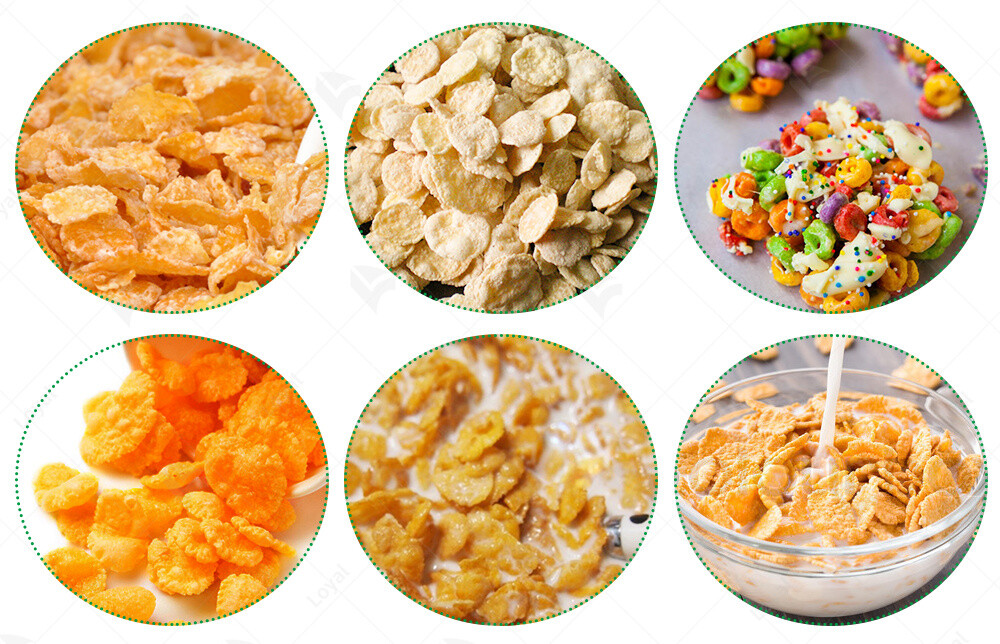
Quality Control and Assurance
Quality control and assurance are paramount in the operation of cornflakes making machines. In 2024, with the ever-growing demand for breakfast cereals, ensuring the highest standards of quality in cornflakes production becomes increasingly crucial. This section delves into the various aspects of quality control and assurance processes implemented in the operation of cornflakes making machines.
1. Ingredient Quality
- The quality of ingredients directly impacts the final product. Corn, the primary ingredient in cornflakes, must meet stringent quality standards. This includes factors such as moisture content, purity, and freshness.
- Suppliers must be vetted to ensure they meet these quality requirements. Regular inspections and testing of incoming ingredients help maintain consistency and integrity in the manufacturing process.
2. Machine Calibration and Maintenance
- Proper calibration and maintenance of cornflakes making machines are crucial for consistent product quality. Machines should be calibrated regularly to ensure accurate measurements and processing parameters.
- Routine maintenance schedules must be adhered to, addressing issues such as wear and tear, lubrication, and replacement of worn parts. This helps prevent breakdowns and ensures smooth operation.
3. Process Monitoring and Control
- Continuous monitoring of the production process is essential to identify any deviations or abnormalities promptly. This includes monitoring parameters such as temperature, pressure, and mixing speed.
- Automated control systems help maintain optimal process conditions, minimizing variations in product quality. Any deviations from preset parameters trigger alarms, allowing operators to take corrective action promptly.
4. Product Testing and Analysis
- Comprehensive product testing is conducted at various stages of production to assess quality and consistency. This includes sensory evaluation, physical tests, and chemical analysis.
- Samples are taken regularly and subjected to rigorous testing to ensure they meet specifications. This helps identify any issues early on and allows for adjustments to be made to maintain product quality.
5. Packaging and Storage
- Proper packaging and storage of finished cornflakes are crucial to preserving quality and freshness. Packaging materials must be food-safe and suitable for maintaining product integrity.
- Adequate storage conditions, including temperature and humidity control, help prevent spoilage and maintain product shelf life. Proper labeling ensures traceability and compliance with regulatory requirements.
In conclusion, maintaining stringent quality control and assurance processes is essential for producing high-quality cornflakes using cornflakes making machines in 2024. By ensuring the quality of ingredients, calibrating and maintaining machines, monitoring processes, conducting thorough testing, and proper packaging and storage, manufacturers can uphold the highest standards of product quality and consistency.
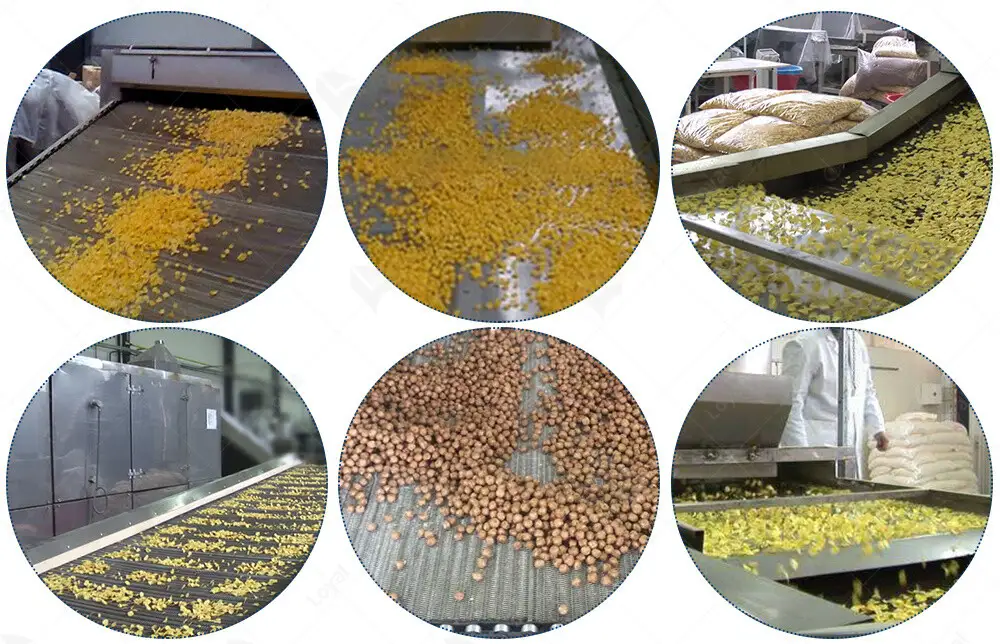
Technological Progress and Future Trends
In the ever-evolving landscape of food processing machinery, cornflakes making machines have witnessed significant technological advancements in recent years. As we delve into the year 2024, it's crucial to understand the latest progress and anticipate future trends in this domain.
1. Automation and Robotics Integration
- One of the most notable trends in cornflakes making machines is the increasing integration of automation and robotics. Manufacturers are investing in advanced robotic systems to streamline production processes, improve efficiency, and ensure consistency in product quality.
- Automated systems are capable of performing tasks such as ingredient mixing, cooking, shaping, and packaging with precision and speed, reducing the reliance on manual labor and minimizing the risk of human error.
2. Enhanced Efficiency and Productivity
- Continuous innovation in machine design and engineering has led to enhanced efficiency and productivity in cornflakes making machines. Modern equipment is equipped with advanced features such as high-speed processing, energy efficiency, and quick changeover capabilities.
- Manufacturers are focusing on optimizing the entire production line, from raw material handling to final packaging, to maximize output while minimizing waste and downtime.
3. Sustainable Manufacturing Practices
- With growing environmental concerns, sustainability has become a key focus area in the development of cornflakes making machines. Manufacturers are incorporating eco-friendly materials and energy-saving technologies into their equipment designs.
- Additionally, there is a shift towards implementing sustainable manufacturing practices such as reducing water usage, minimizing emissions, and optimizing resource utilization throughout the production process.
4. Integration of IoT and Data Analytics
- The Internet of Things (IoT) and data analytics are revolutionizing the way cornflakes making machines are operated and maintained. IoT-enabled sensors and devices collect real-time data on machine performance, allowing for predictive maintenance and troubleshooting.
- Data analytics tools analyze the collected data to identify patterns, optimize production processes, and make data-driven decisions for continuous improvement and innovation.
5. Personalization and Customization
- Consumer preferences are becoming increasingly diverse, driving the demand for personalized and customized cornflake products. To meet this demand, manufacturers are developing flexible and modular cornflakes making machines that can accommodate a wide range of recipes, flavors, and shapes.
- Customization features such as adjustable settings, interchangeable components, and recipe management systems empower producers to tailor their products to specific market segments and consumer preferences.
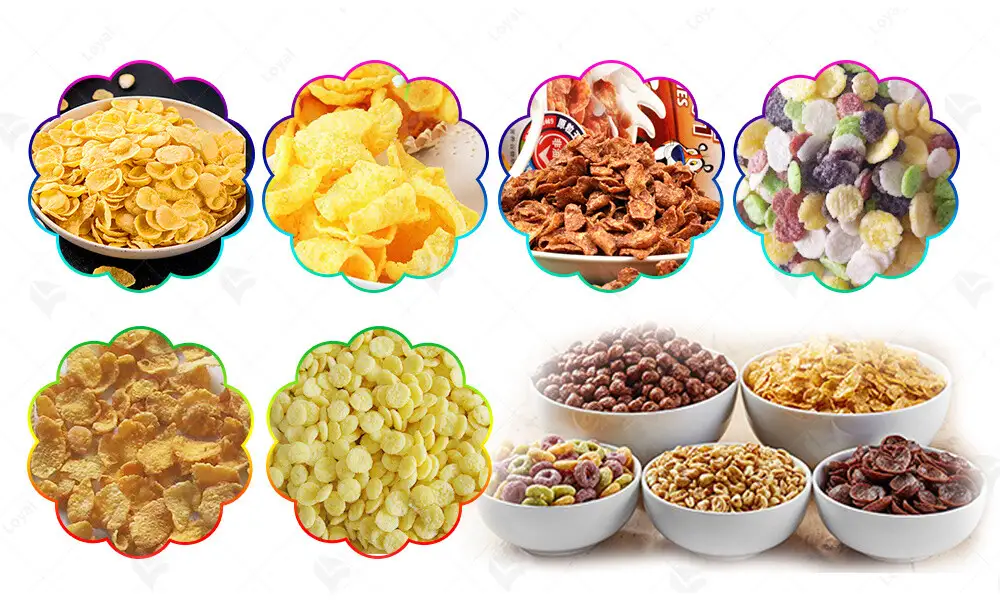
Reference
1. Food Processing:
- Website: [Food Processing](https://www.foodprocessing.com/)
- Description: Food Processing is an authoritative website in the food processing industry, providing news, articles, and resources on food processing technology, equipment, and industry trends.
2. Food Engineering:
- Website: [Food Engineering](https://www.foodengineeringmag.com/)
- Description: Food Engineering is a resource platform focused on the food manufacturing industry, offering news, articles, and insights on food engineering technology, manufacturing processes, equipment, and management.
3. Process Industry Forum:
- Website: [Process Industry Forum](https://www.processindustryforum.com/)
- Description: Process Industry Forum is an online community providing resources and information about process industries and food manufacturing technology, covering various industrial food machinery and manufacturing processes.
4. Food Manufacture:
- Website: [Food Manufacture](https://www.foodmanufacture.co.uk/)
- Description: Food Manufacture is an authoritative website on the UK food manufacturing industry, offering news, analysis, and commentary on food production technology, equipment, and market trends.












